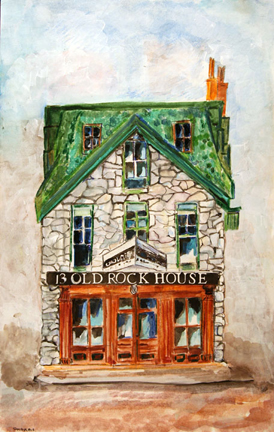Changes to the St. Louis Board of Aldermen in my lifetime, future change proposed

Every ten years, following each national census, the boundaries of St. Louis’ 28 wards are redrawn. The map above is based on the 1960 census.  UPDATE 2/8/2010 4:25PM: the map above reflects changes following a 1965 lawsuit that challenged the way the maps were drawn. Prior to 1965 districts were based on the number of registered voters, not the number of residents.
The map below (rotated 90 degrees counter-clockwise) is the current map based on the 2000 census.
Most wards are still in the approximate same location while a handful are in completely different parts of the city. The idea is for each ward to contain the same number of residents. Areas that lose more people than others will see the physical size of the ward grow.
The ward map at the top is from a 1967 book published by the St. Louis Public schools explaining the election process: We Elect! The story of St. Louis Government and Politics. It was published in the year I was born, 1967. They met at 11am on Fridays wheres they meet at 10am Fridays currently, not sure when that changed. Looking through the information in the book I decided I needed to put it in a table to see it in one place.
 Some interesting things jump out at me:
Some interesting things jump out at me:
- Five new members were elected in 1967, three of which were Republicans (ward # shown in red). One Republican is on the current board, first elected way back in 1979.
- Eight members (29%) were Black. Currently the board has 12 black members (43%) plus Board President Lewis Reed.
- Only two female members (7%), both Black. The current board has eight females (29%) split evenly between Black & White.
- 32% (9/28) of the members had served 12 or more years.  Today 46% (13/28) have served 12 or more years.
- Only one (4%) had served 20 years. Today seven (25%) have served 20 or more years.
- The average length of service was 7.5 years in 1967. In 2010 it is 11.45 years, a 53% increase!
Elsewhere in the book the committeeman & committeewomen were listed for each ward. Every ward (except the 21st) had both Democrats & Republicans in place. We had somewhat of a two-party city in 1967. Today we have a one party city yet we hold primary & general elections. In one party elections holding a primary & general elections is just a huge waste of limited money.  With service cuts to reduce the city budget holding unnecessary partisan primaries is a luxury we just can’t afford.  I’d like a lawyer out there to contact me to see what it would take to switch our city elections to non-partisan. I’d love a measure on the ballot during an an upcoming election, such as November 2010.
I know many of you are not fans of term limits but I see a need for a limit of say five terms/20 years. Two decades is plenty of time to get into office, learn the ropes, and have an impact before passing the torch onto the next generation.
I will be on KDHX (88.1FM) tonight (Monday 2/8/2010) at 8:30pm discussing this and other local issues.
– Steve Patterson





